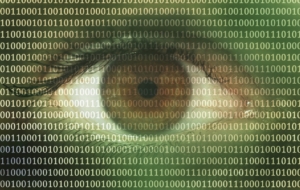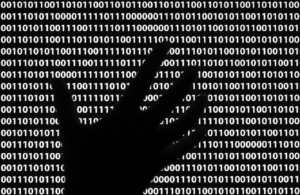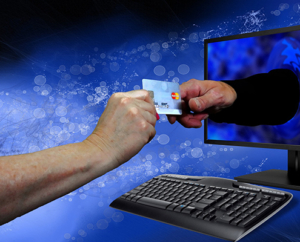Cryptocurrency Fraud and Malware Scamming Investors
Cryptocurrency is hot right now, and whenever something is hot, hackers pay attention. Research has recently showing that more than 10 percent of all the funds that were raised through the ICOs, initial coin offerings, simply disappeared.
 It is popular for ICO’s to be used as an early-stage investment form. So, instead of buying shares, investors buy digital tokens. However, the companies that sell these ICOs don’t have any product to give investors except a whitepaper. This whitepaper tells them how things could theoretically work, the investment scheme, but it seems, it doesn’t always happen that way.
It is popular for ICO’s to be used as an early-stage investment form. So, instead of buying shares, investors buy digital tokens. However, the companies that sell these ICOs don’t have any product to give investors except a whitepaper. This whitepaper tells them how things could theoretically work, the investment scheme, but it seems, it doesn’t always happen that way.
Sometimes the Money Just Disappears
Ernest & Young took a look at over 370 ICOs. The firm found that out of the $3.7 billion raised through these offerings, about $400 million vanished. Where did it go? Research shows it went to hackers using phishing attacks.
It’s not clear if the researchers looked at companies that didn’t deliver or disappeared. For instance, one company, Tezos, pulled in about $232 million during an ICO. However, investors got nothing. That looks like fraud.
How Malware is Responsible for Missing Money
At this point, you might be wondering how these scams are happening. One way is criminal hackers using malware. Specifically, it’s Satori. Satori, which is the actual malware responsible for this, is definitely wreaking havoc with investors who are looking for a huge return. Netlab 360, a Chinese-based company, released a report recently pointing the finger at Satori, which is affecting the Claymore Miner software.
By using mining software, investors are able to obtain the cryptocurrency. However, the malware is making this impossible getting in the middle of the transaction. After the malware gets control of the software, it replaces the address of the wallet with one that is controlled by the hacker.
So, the user believes that this currency is coming into their wallet, but in reality, they are doing the work and someone else, the hacker, is getting the currency. What’s even worse is that the owners of the wallets don’t even realize this is happening unless they look at their software configuration.
In total, researchers have determined just over one Etherium coin has been hacked, so it’s not extremely profitable at this point, yet. However, there is great potential, and when it comes to cybercriminals, they will certainly find a way.
ROBERT SICILIANO CSP, is a #1 Best Selling Amazon author, CEO of CreditParent.com, the architect of the CSI Protection certification; a Cyber Social and Identity and Personal Protection security awareness training program.

 The data from this survey stress how important it is to implement some type of cyber protection strategy for a business, which includes backing up data several times a day, and using the 3-2-1 backup rule. This is creating three copies of your data (a single primary copy and two backups), storing your copied on two different types of storage option, and then storing one of the copies in the cloud or remotely.
The data from this survey stress how important it is to implement some type of cyber protection strategy for a business, which includes backing up data several times a day, and using the 3-2-1 backup rule. This is creating three copies of your data (a single primary copy and two backups), storing your copied on two different types of storage option, and then storing one of the copies in the cloud or remotely. As with any other phishing scam, vigilance is extremely important. We are certainly going to have to keep on our toes for months, or even years, as this fallout from the pandemic could be around for a long time.
As with any other phishing scam, vigilance is extremely important. We are certainly going to have to keep on our toes for months, or even years, as this fallout from the pandemic could be around for a long time. Relief Fund Scams
Relief Fund Scams  The US Federal Trade Commission has added up the costs of all of these scams. They are looking from those that started from the 1st of January to the current week. What are these numbers made of? Mostly vacation and travel scams, as these have added up to $4.7 million lost. Online shopping scams are also out there, but they have only added up to $1.4 million.
The US Federal Trade Commission has added up the costs of all of these scams. They are looking from those that started from the 1st of January to the current week. What are these numbers made of? Mostly vacation and travel scams, as these have added up to $4.7 million lost. Online shopping scams are also out there, but they have only added up to $1.4 million. This type of identity theft shows us that our credit system is more vulnerable than we might think. Basically, it is easy to create a credit file on these identities, and once they have that, they can get a credit card or loan.
This type of identity theft shows us that our credit system is more vulnerable than we might think. Basically, it is easy to create a credit file on these identities, and once they have that, they can get a credit card or loan. Slowly, the motivation behind the hacking is being understood. At first, it seemed obvious, the stolen data being personally identifiable information, which is what was taken can be used for new account fraud. But in government breaches, they usually look for military plans, blueprints, and documents that deal with policy.
Slowly, the motivation behind the hacking is being understood. At first, it seemed obvious, the stolen data being personally identifiable information, which is what was taken can be used for new account fraud. But in government breaches, they usually look for military plans, blueprints, and documents that deal with policy. Security
Security If you own a small business, ask yourself just how the mega-giant Target got infiltrated by cybercriminals in the first place. Answer: a ma and pa HVAC vendor of Target’s!
If you own a small business, ask yourself just how the mega-giant Target got infiltrated by cybercriminals in the first place. Answer: a ma and pa HVAC vendor of Target’s! The attack begins when you’re lured, by a cybercriminal, into clicking a malicious link that downloads malware, such as CDT-Locker. Hackers are skilled at getting potential victims to click on these links, such as a phony e-mail, apparently from a company you do business with, luring you into clicking on a link or opening its attachment.
The attack begins when you’re lured, by a cybercriminal, into clicking a malicious link that downloads malware, such as CDT-Locker. Hackers are skilled at getting potential victims to click on these links, such as a phony e-mail, apparently from a company you do business with, luring you into clicking on a link or opening its attachment.























